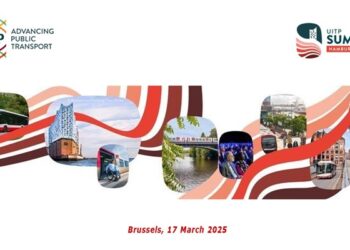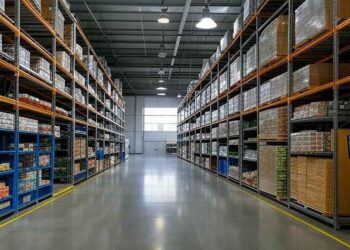As unpopular as they might be with drivers, recording devices are now a common sight on roads both large and small, especially in the western world. An advanced network of linked camera technologies is the most direct and efficient way to monitor traffic, whether used for law enforcement, surveillance, journey time measurement or any number of other applications.
Among the most advanced of these roadside recording devices are automatic number plate recognition (ANPR) cameras, which use optical character recognition to read vehicle number plates. These camera systems have been steadily evolving over the last decade and are now a ubiquitous presence on modern road networks, with up-to-date systems able to spot the licence plates of speeding cars, for example, and send the information back to a central database without the need for time-consuming manual processing.
The wealth of ANPR developments in the UK, one of the world’s largest markets for the technology, illustrates how central ANPR is becoming to modern transportation.
London Mayor Boris Johnson has thrown his full support behind ANPR, both as a means of enforcing the city’s congestion charge and as a tool for the Metropolitan Police to track down suspect vehicles.
Enthusiasm for ANPR cameras is not just limited to big cities. In July 2011, it was reported that the small town of Royston, in Hertfordshire, became the first location in the UK to deploy a complete ring of ANPR cameras to monitor all traffic entering and leaving the town.
Development of automatic number plate recognition technology
It’s unlikely that ANPR systems would be as popular as they are today without a continual advancement of the technology since the turn of the century. Paul Davey, business development director for speed enforcement products at multinational ANPR specialist PIPS Technology, explained how these systems have evolved.
“Until the early 2000s, ANPR systems consisted of a camera, usually with an illuminator, and a computer running ANPR software. In 2003 PIPS Technology introduced the P372, the first fully integrated ANPR camera with all of these functions in a single small housing.”
As well as the ability to house multiple complex functions, ANPR cameras have rapidly improved in terms of image scope and resolution. “The first ANPR cameras used the same CCD [closed caption display] sensors that were fitted to camcorders and CCTV cameras at that time,” said Davey.
“The resolution of these sensors limited the camera to coverage of a single lane. With the rapid development of digital cameras and HDTV, CCD and CMOS [complementary metal-oxide-semiconductor] image sensors have become available with sufficient resolution to cover two or more lanes of traffic. Fortunately, the development of processors has kept pace and several number plates in an image covering several lanes can be read within a fraction of a second.”
Today’s ANPR requirements: more tech in smaller boxes
With such rapid improvement comes an expansion of potential applications, as well as higher expectations from ANPR users. Today’s ANPR devices are expected to accommodate more technology than ever into an easily installed box which requires no extra street furniture or power supply to mount and run.
All ANPR cameras must have a high-resolution output and be completely dependable, but depending on the purchaser’s particular requirements, many of these high-tech cameras also need to perform multiple functions – ANPR plus video streaming and recording, for instance – within one device, provide readable images in low-light conditions and the ability to easily interface with the customer’s back office systems.
Improved ANPR connectivity
Another important advancement in the world of ANPR is the incorporation of internet connectivity to the systems, paving the way for a constantly communicating network of camera units, closer to the concept of the comprehensive intelligent transport system (ITS).
Davey noted that the addition of online functions streamlines the optimisation and maintenance process. “Support personnel are able to quickly resolve camera deployment issues by logging onto the camera, viewing images and data and providing advice to the customer about changes to optimise the performance,” he explained.
The improved connectivity of modern ANPR systems means they are being increasingly relied upon in vital operations like security and border control operations. For example, the SeeDOT system, developed by Israeli company Hi-Tec Solutions (HTS) for the US market, has been designed to enhance security and efficiency in high-volume freight traffic applications.
The system, which can automatically photograph each approaching truck, as well as licence plates and US Department of Transport numbers, before cross-referencing them with US federal databases, is due to be installed at Arizona-Mexico border crossings from May 2012. The system’s automation and communication functions are expected to maintain security while speeding-up the screening process through the reduction of unnecessary manual checks.
“We expect to see an increase in the amount and quality of inspections being conducted along with improved operational efficiencies and better enforcement actions,” HTS Americas CEO John Whiteman told Traffic Technology Today.
Future for ANPR cameras: innovation and standardisation
As technology continues to advance, Davey said that future ANPR cameras will be able to capture traffic scenes in more detail than ever before. “ANPR cameras will become ‘vehicle information’ or ‘scene information’ cameras that will provide much more than just the vehicle number plate and a contextual image: they will also provide vehicle make, class, colour, distinguishing features and other details,” he claimed.
According to Davey, the improvement in image clarity and system reliability will see automated camera technology increasingly superseding staffed systems for high-volume traffic monitoring tasks, especially with the prospect of road privatisation and toll-based funding mechanisms seemingly just around the corner in the UK.
“We are already seeing an increase in the requirement for free flow tolling and indication that for new roads in the UK may be privately funded,” he said.
“As ITS products that provide higher accuracy read capability and lower cost-per-lane solutions emerge, tolling monitoring stations rather than toll booths collecting monies will be more prevalent.”
PIPS Technology has been extremely active in campaigning for greater standardisation in the ANPR and traffic management sphere, contributing to the drafting of a new industry standard urban traffic management and control (UTMC) interface so that different systems are able to communicate with one another as the ANPR network begins to merge into one system.
For Davey, producing recognised standards is instrumental for the future of the ANPR market. “These days, ANPR cameras increasingly form part of larger systems and this is a major growth area for the ANPR industry, which will be impaired if integrators have to work with many different proprietary interface standards.
“We are finding that as we have evolved from an ANPR camera supplier to an ITS provider, there are more calls on us to adapt our interfaces to meet specific customer requirements. Many times, we see requests for the same information interchange but in differing formats. Standardisation along the lines of UTMC would help both OEMs and system integrators.”
































